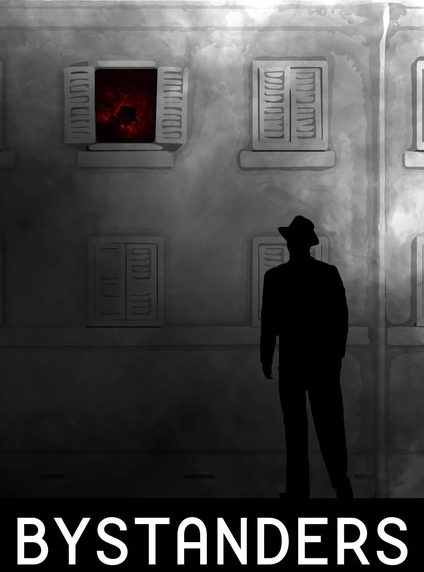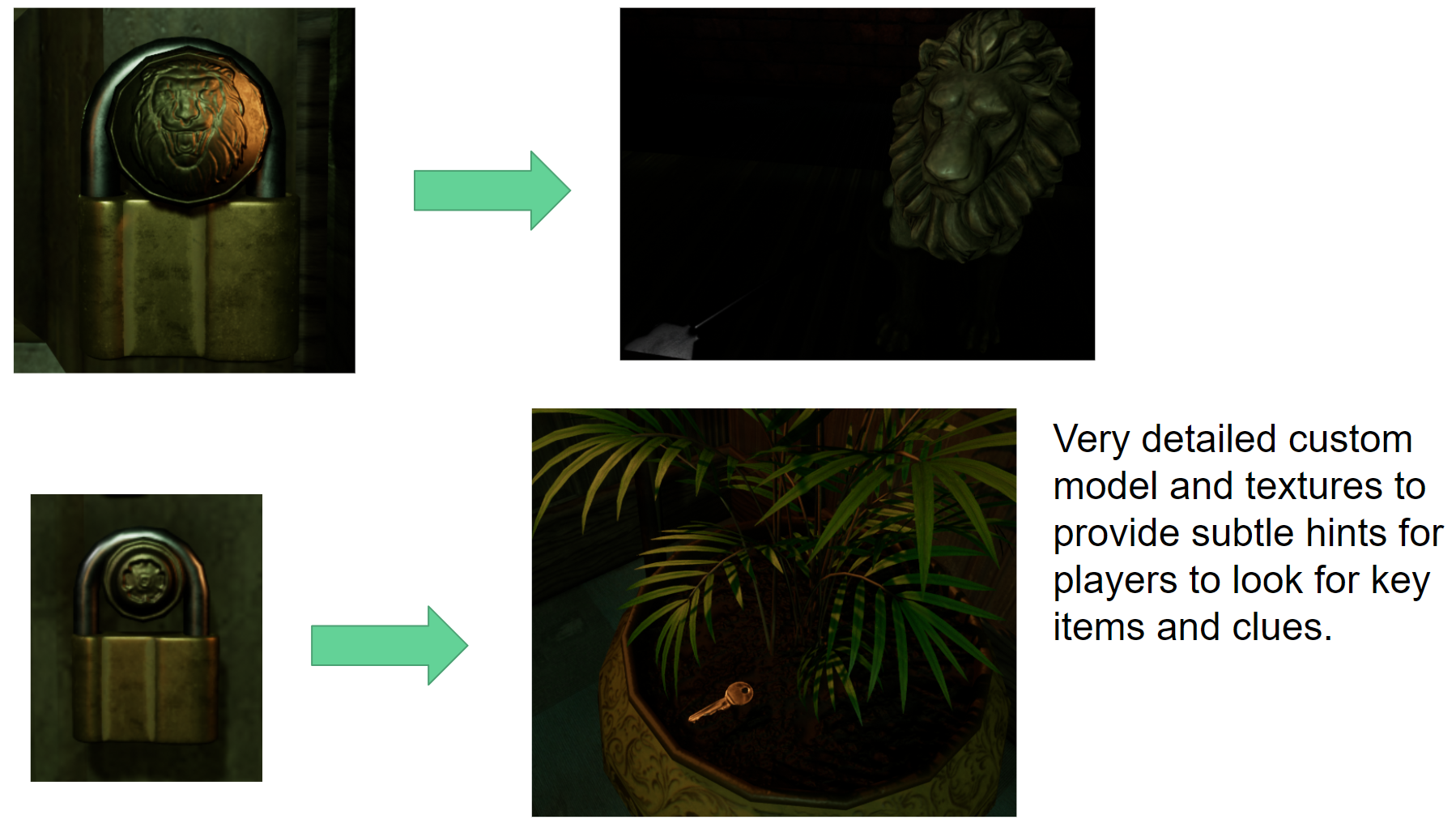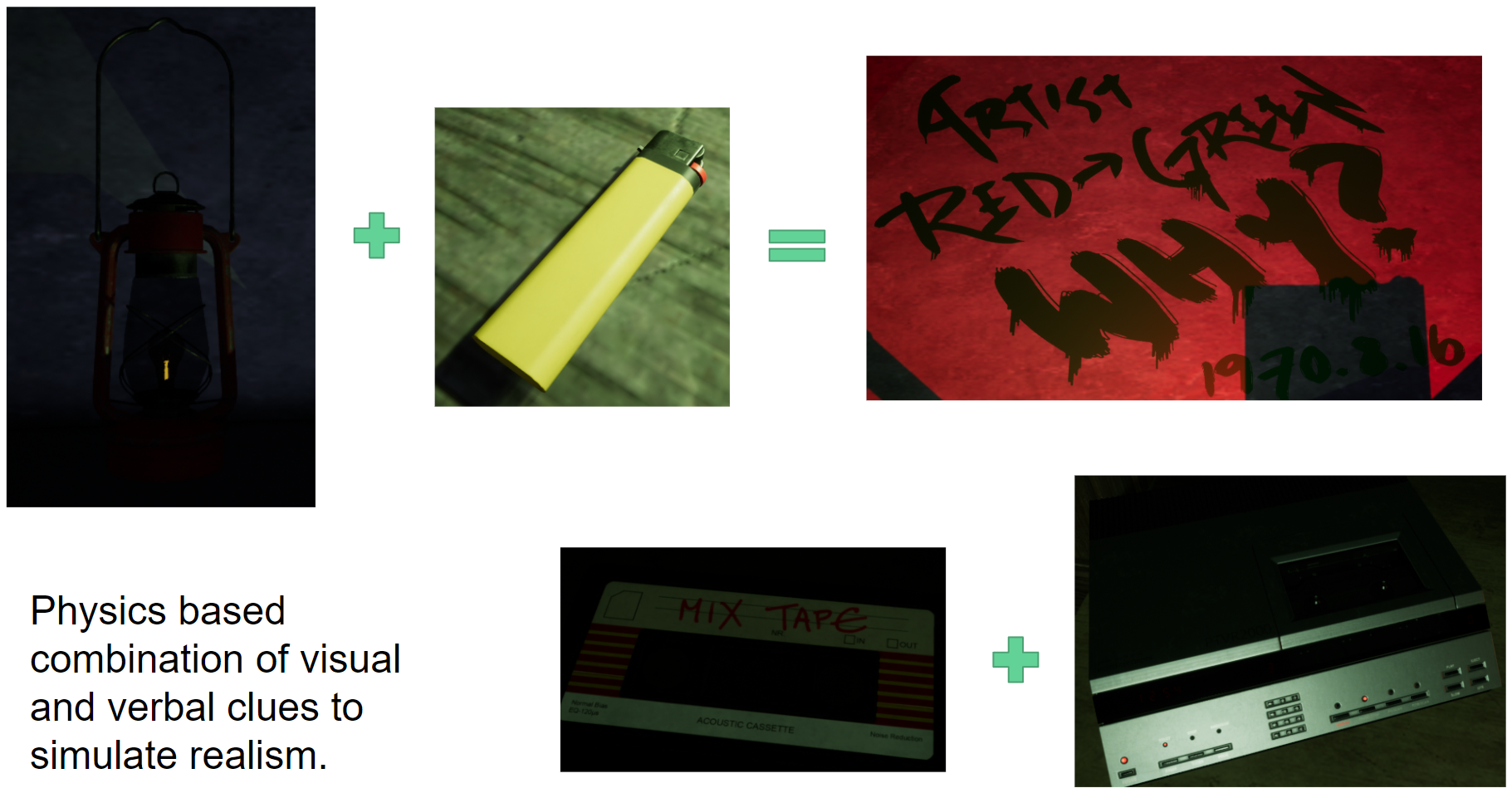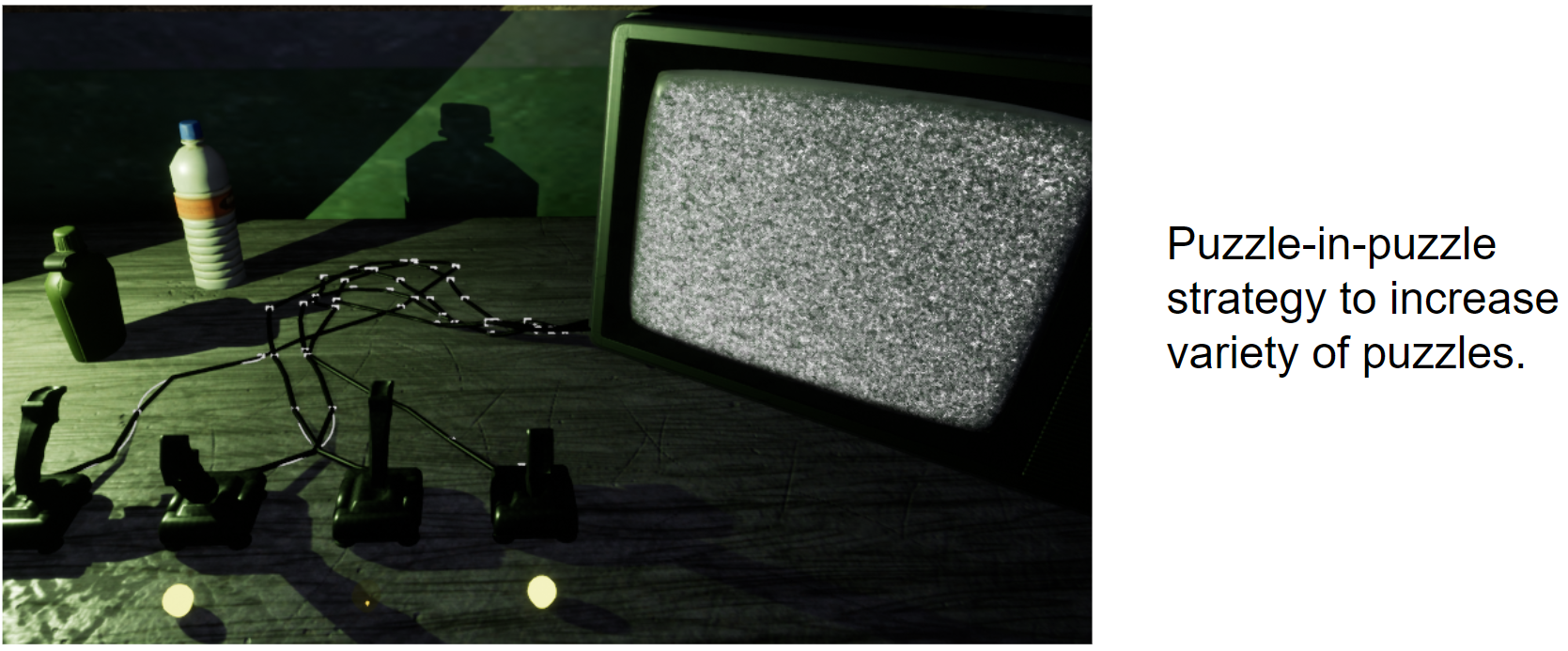Experience on VR Detective Game Prototyping
Published:
As the emergence of virtual reality (VR), we observe an increasing trend in VR games, especially powered by commercial off-the-shelf VR headsets, such as HTC Vive. Apart from fast-pacing VR games like Fruit Ninja VR and FPS games like Robo Recall, we leverage the essence of VR - immersive and interactive experience - to design and develop a slow-pacing detective game, ByStanders.
ByStanders is a slow-paced puzzle-solving detective VR game background in the 1980s. Players can explore and look for clues to solve crimes by teleporting and interacting with surrounding objects. This game simulates reality by making most objects interactable and highly detailed models and textures, to provide immersive experience for players.
Our work is inspired by PC games such as L.A. Noire (Team Bondi 2011), Sherlock Holmes: Crimes & Punishments (Frogwares 2014), Danganronpa: Trigger Happy Havoc (Spike Chunsoft 2016), and Kona (Parabole 2017).
 [Click to view our short video]
[Click to view our short video]
Highlights
As a game prototype, we discover following key highlights empowered by both our game design and VR.
- Highly interactive. Empowered by physics engine (Unreal Engine 4 in our case), we develop thousands of interactable items and characters. The interactions between the player and game objects and characters stimulate the player’s thinking and reasoning capabilities when acting as a detective.
- Immersive experience. The virtual reality nature of the game together detailed 3D models and textures provides extremely immersive experience for the player by simulating a realistic crime scene where every detail could reveal parts of the truth.
- Freedom in puzzle-solving. The storyline of the game is non-linear and the player is free to discover clues in any order. Discovering any clue becomes an enjoyable process.
Examples of Puzzle Design
We provide several examples of our puzzles to illustrates the key points. First, we design our puzzles to incorporate subtle details in the game environment. 
Second, we focus on physics-based interactions to obtain both visual and verbal clues. 
Third, we also adopt puzzle-in-puzzle strategy. 
